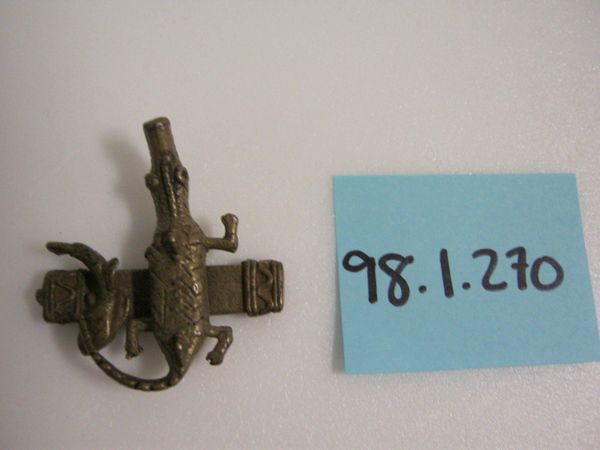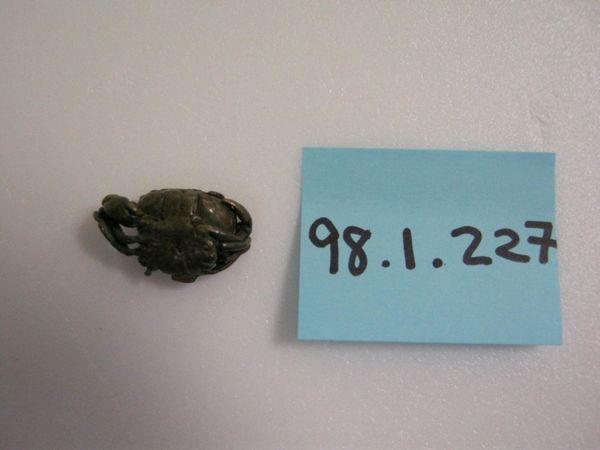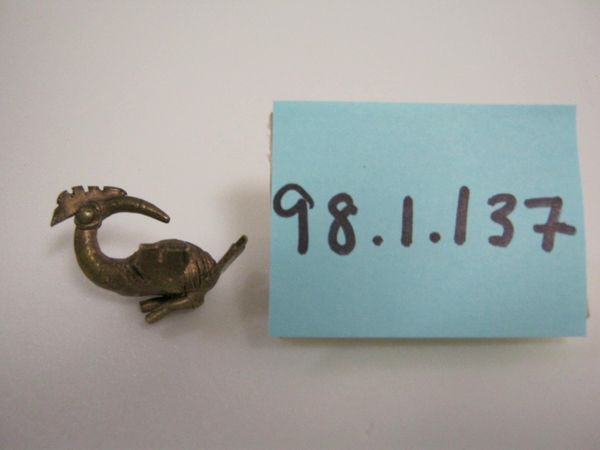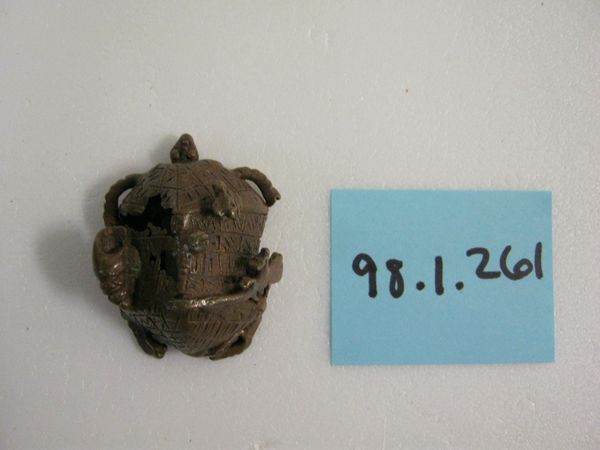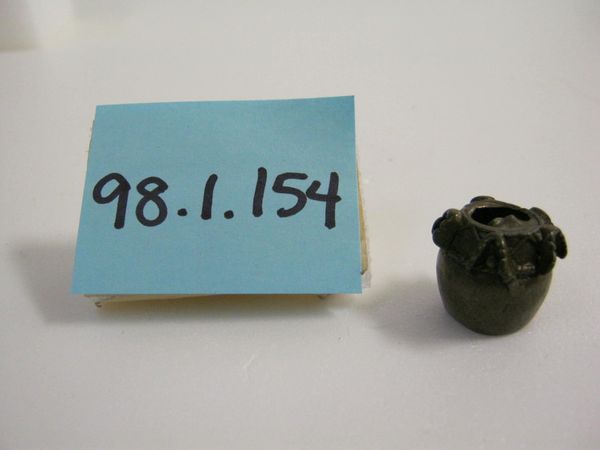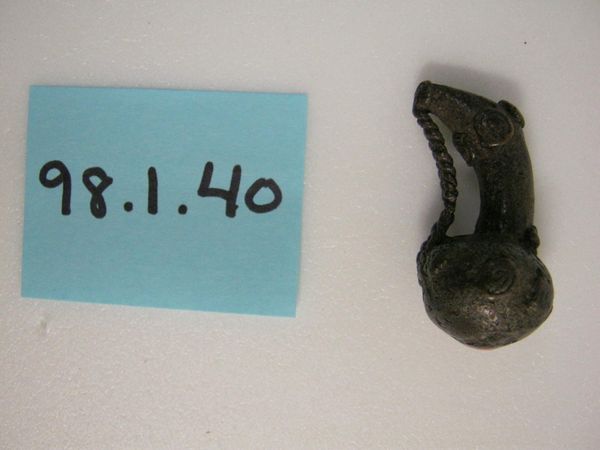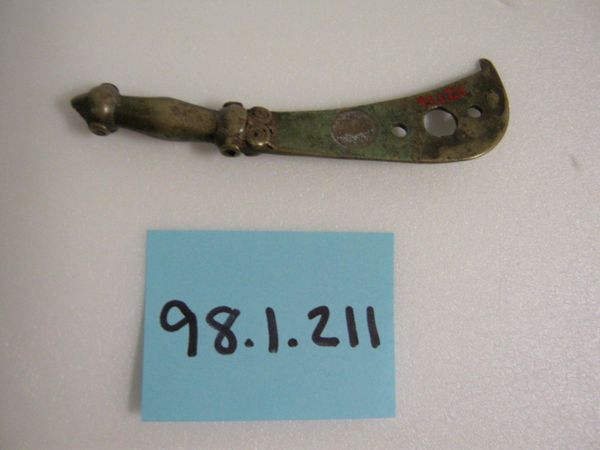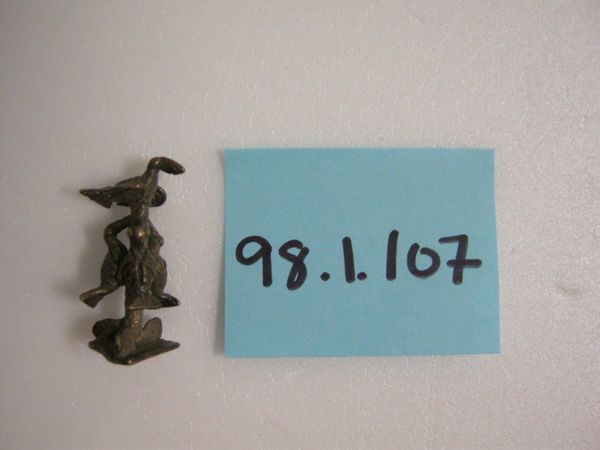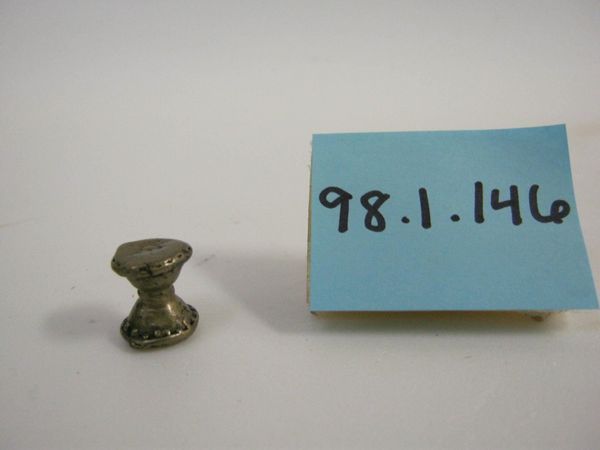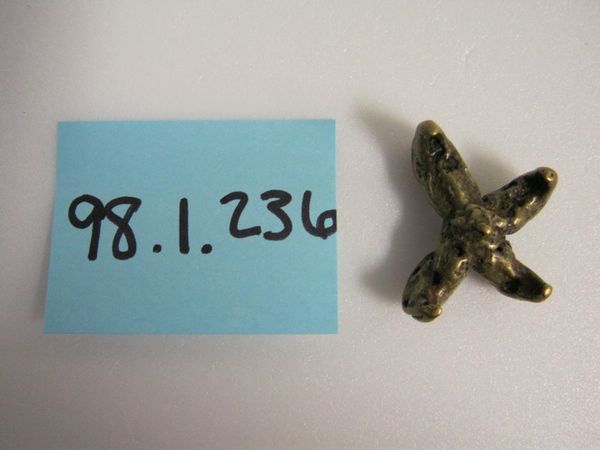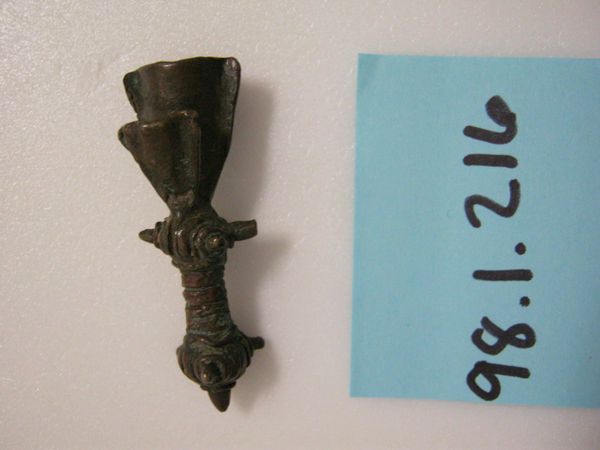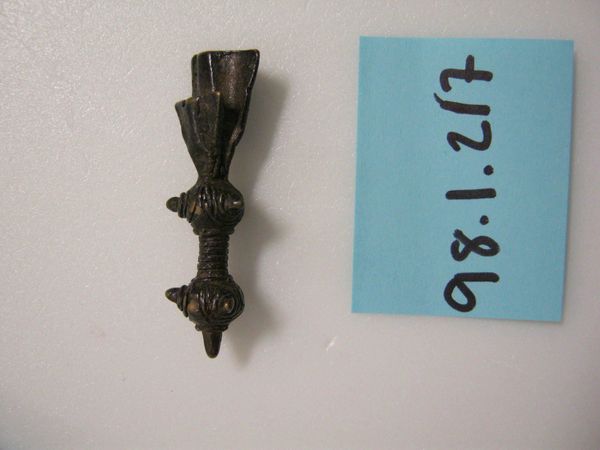![Goldweight [Ram's Head] by Akan](/_next/image?url=https%3A%2F%2Fd2w8kbdekdi1gv.cloudfront.net%2FeyJidWNrZXQiOiAiYXJ0ZXJhLWltYWdlcy1idWNrZXQiLCAia2V5IjogImFydHdvcmtzLzk5ZDA2ZjA0LWYyMWYtNDE4OS04M2I4LWNkYzM3NGNhMmFmZi85OWQwNmYwNC1mMjFmLTQxODktODNiOC1jZGMzNzRjYTJhZmZfZnVsbC5qcGciLCAiZWRpdHMiOiB7InJlc2l6ZSI6IHsid2lkdGgiOiAxOTIwLCAiaGVpZ2h0IjogMTkyMCwgImZpdCI6ICJpbnNpZGUifX19&w=3840&q=75)
brass, carving, sculpture
african-art
brass
carving
figuration
ancient-mediterranean
sculpture
Dimensions: 1 1/4 x 1 1/2 x 3/8 in. (3.18 x 3.81 x 0.95 cm)
Copyright: Public Domain
Editor: Here we have an Akan goldweight, specifically a ram’s head, carved from brass sometime in the 19th or 20th century. It's so small and dense, and those little spirals are mesmerizing. What strikes you when you look at this piece? Curator: The formal arrangement of spirals invites close scrutiny. Consider the texture—the cool, metallic density offset by the intricacy of carved details. The horns form elegant semi-circles, echoed and countered by the multiple spirals covering the ram’s head. Observe the repetition, and how that constructs a sense of internal harmony and proportion. What do you make of the overall symmetry? Editor: Well, the symmetry gives it a sense of balance and almost an iconic feel, like it’s less a representation of an individual ram and more of an idealised form. The weight, being a functional object, what influence does that have? Curator: Weight is integral, of course. This isn't mere ornamentation; its mass testifies to its function as measurement, thus intimately linked to the concepts of value and exchange. That materiality grants presence to its purpose. The interplay between utilitarian design and sculptural form is fascinating. Editor: So the functionality informs its artistic qualities? Curator: Precisely! Its physical weight grants significance to the cultural "weight" it carries, both literal and symbolic. That union between form and function results in a compelling aesthetic object. Editor: I never thought about it like that - how much the physical properties contribute to meaning! Thanks for sharing that perspective. Curator: And thank you for your insight. Close looking reveals how material and form converge in compelling ways.
Comments
No comments
Be the first to comment and join the conversation on the ultimate creative platform.
